|
As we are entering into the rainy months ahead, I am beginning to take the daily sunshine for granted. As I get into the swing of life in a rainy weather condition, I will still elaborate on day to day life and the little things that make it so interesting and different, especially when i can catch a glimpse of some sunshine. I have just got some precious shoes fixed by a street cobbler on a fair weather day, I felt it was time to give these humble local street cobblers some cyberspace coverage in my photography blog. I also felt that it is crucial to highlight this vanishing trade as many of our younger generations are unaware of such informal services. Traditional street cobblers are now rarely seen in Singapore as we continue the march towards commercialism and modernity. Street cobbling is a fading trade due to the urbanization and availability of modern cobbling services throughout the island. Such modern cobbling has sophisticated equipment and provides more services such as shoe polishing which street cobblers do not provide. Although the nature of their work is informal and humble, it is important for us to remember that these cobblers bear testimony to the entrepreneurial spirit of our city-state and are part of a rich cultural heritage to the early years of Singapore. Let me first off start by saying one thing: a cobbler is not a shoemaker. This is one thing that bothers me and has just seem to have stuck in people's heads since the dawn of time. I do believe that cobblers, at one point in time, did double as shoemakers and shoe menders, but in this day and age, they are simply people who fix other people's shoes. Now, don't get me wrong, cobblers can also be artisans, as shoe mending is quite different and can be quite difficult with respects to shoe making, but nevertheless, they are different. I state this because I feel that many people still believe that they are the same thing, or that they simply just don't know that a bespoke shoemaker is by no means a cobbler. It's like calling a pattern cutter (of suits) a tailor and asking him to hem your trousers. If you do this, you would be insulting that individual to the fullest, as their years of extensive training will seem like nothing. Same thing for a bespoke shoemaker. That being, let me get on with the rest of the post. Cobblers became popular after local people switched from clogs in the olden days to modern footwear. They either worked in the open or in tiny cubicles along street pavements or along five-foot-ways. Street cobblers usually occupied a specific locations for years although some were itinerant and cycled a cart laden with footwear repairing tools around housing estates. Although shoes, sandals and flip flops have become cheaper and cheaper the role of the street cobbler is still pretty relevant and visible in Singapore. You can find him sitting at most street corners and he will repair shoes while you wait or within a matter of hours on the same day. He is hard working and does his work in the daylight hours. If anyone has to bear the local summer heat the most, then it has to be this humble and hardworking cobbler! He literally spends hours in humid temperatures, especially in the summer months. Street cobblers use different kinds of knives, hammers, nails, pincers, shoe brushes, shoe lasts, shoe polish, threads of different colours, needles, adhesive and scissors. They store away their tools in boxes or baskets. They also keep with them rolls of leather, synthetic leather, varieties of vinyl soling material and rubber pieces. Most street cobblers in their 60s or 70s remarked that they plan to do this for the rest of their lives when being interviewed. Some of them started mending shoes at a very young age to earn a living. They didn’t have the privilege to choose a career and being a cobbler seemed to be what everyone was doing back then, so they just picked it up at a young age. They usually work on all kinds of shoes – from slippers and sandals to ladies heels, leather. Shoe repairing seemed to be the most lucrative line of work in the older days of Singapore but nowadays, it’s definitely a disappearing trade. Not many men these days have interest in working long hours under the hot sun, or getting wet in the rain, so there is no one to replace the cobblers that we’ve lost. These street cobblers are part of the last of such disappearing trade. Street cobblers replace old soles, stitch up torn slippers and replace heels. To patch up or replace soles, first they would select suitable material according to the customer's footwear. The outline of the shoe shape was traced on the selected material with a pencil. The cobbler would cut it and finally stick it on with a strong adhesive to the shoe. The edges were trimmed with a very sharp knife. Sometimes it was reinforced with a row of small nails. Heels were replaced in a similar manner while torn slippers were stitched up neatly where required. Some traditional street cobblers can still be found in places like People Park's Complex, Holland Village and at the City Hall MRT entrance. This handful of traditional cobblers are slowly dwindling in number as their business are dominated by commercial shoe mending shops located in shopping malls. The streetside cobbler has to be a jack-of-all-trades to survive. Respect to these cobbler dudes, they are self employed, they earn their money under any weather condition, rain or shine and they really deserve fair praise for their under rated craft.
3 Comments
Jason
10/3/2013 02:26:39 am
Do u have a list of all traditional streets cobblers in Singapore ? 我要补靴。Thanks.
Reply
Siti Omar
5/1/2015 12:10:38 pm
Hi Jennifer!
Reply
Leave a Reply. |
Author
|

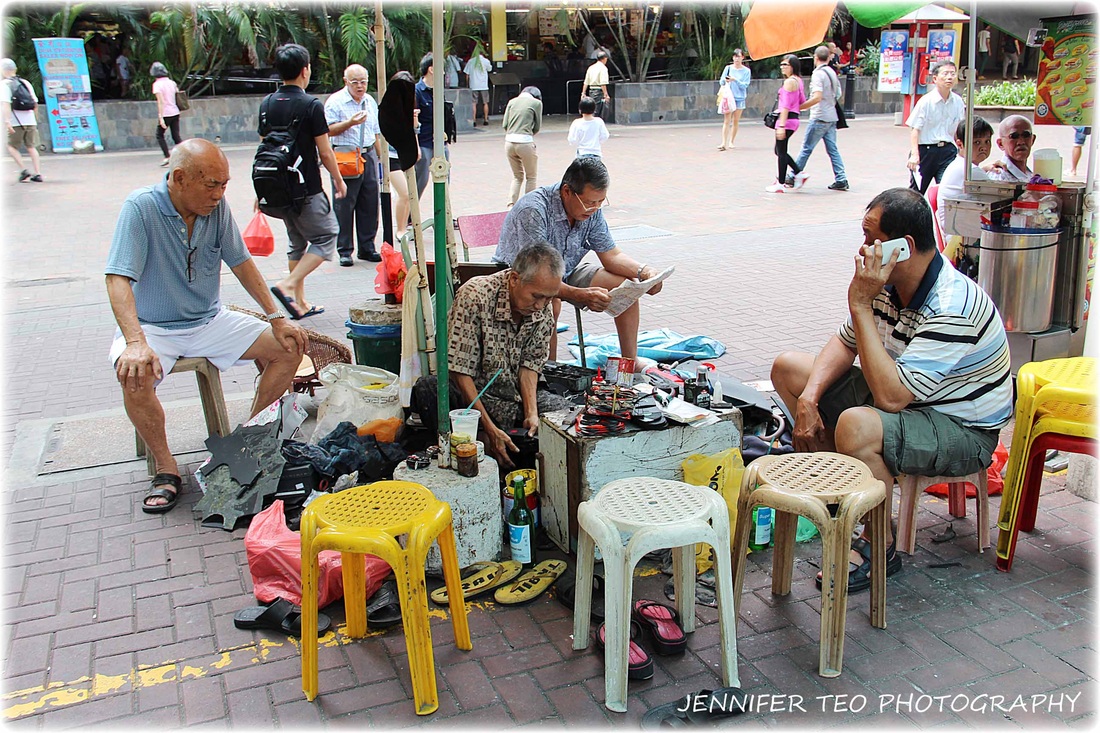
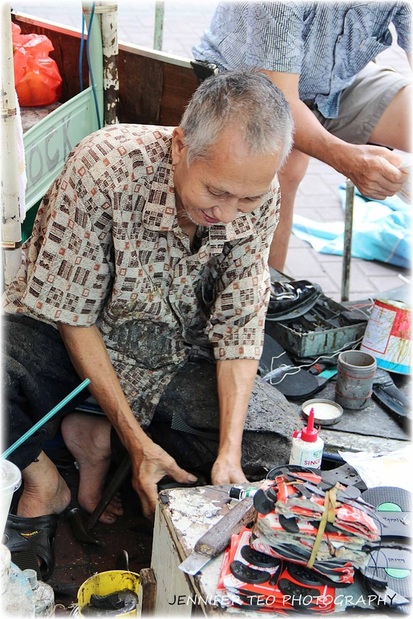
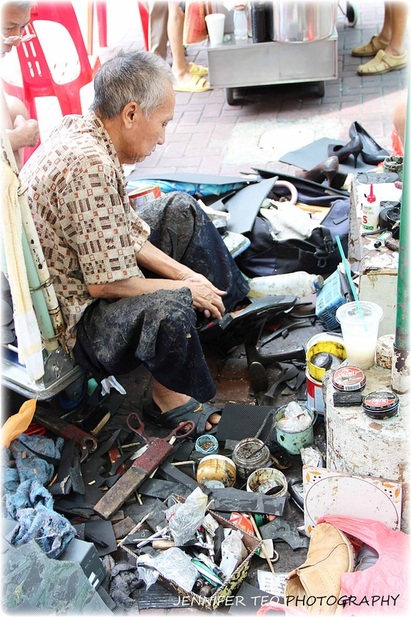
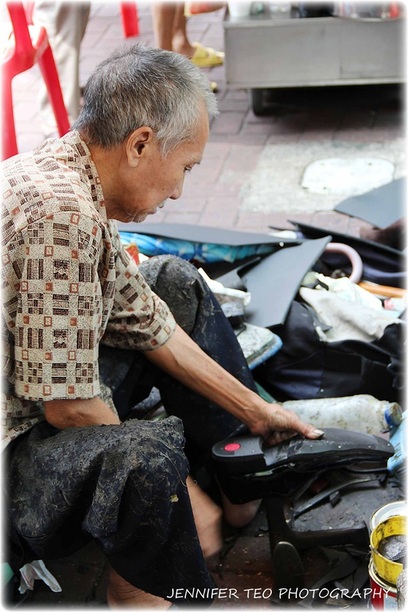
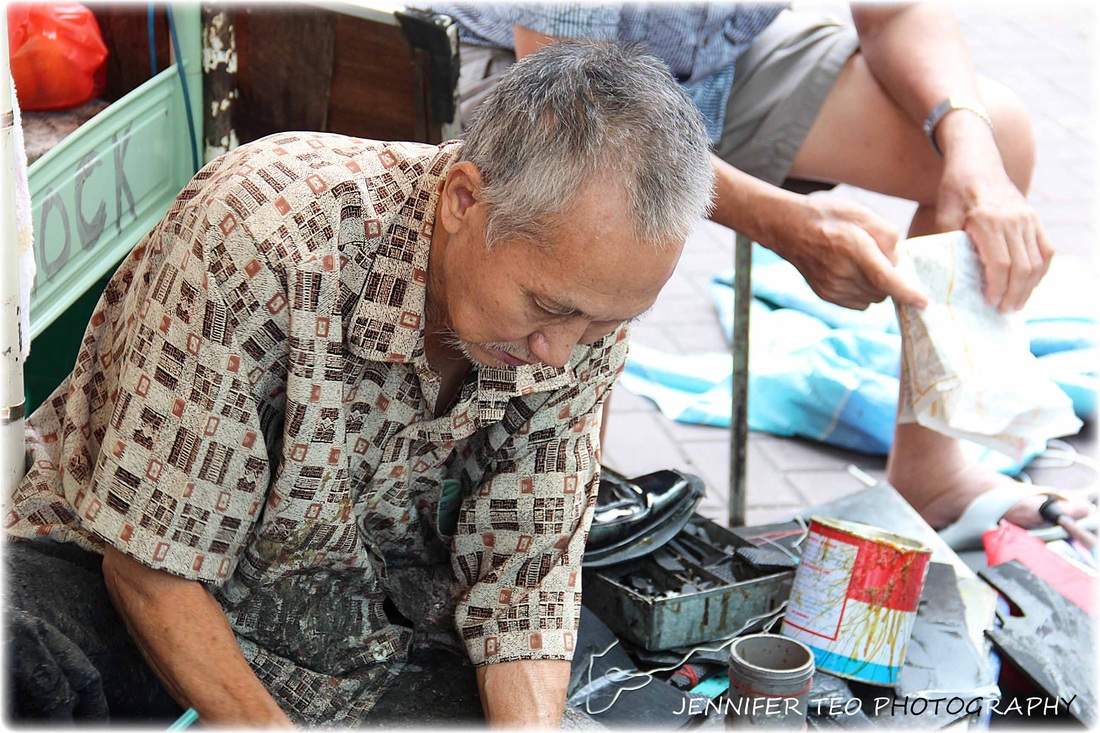
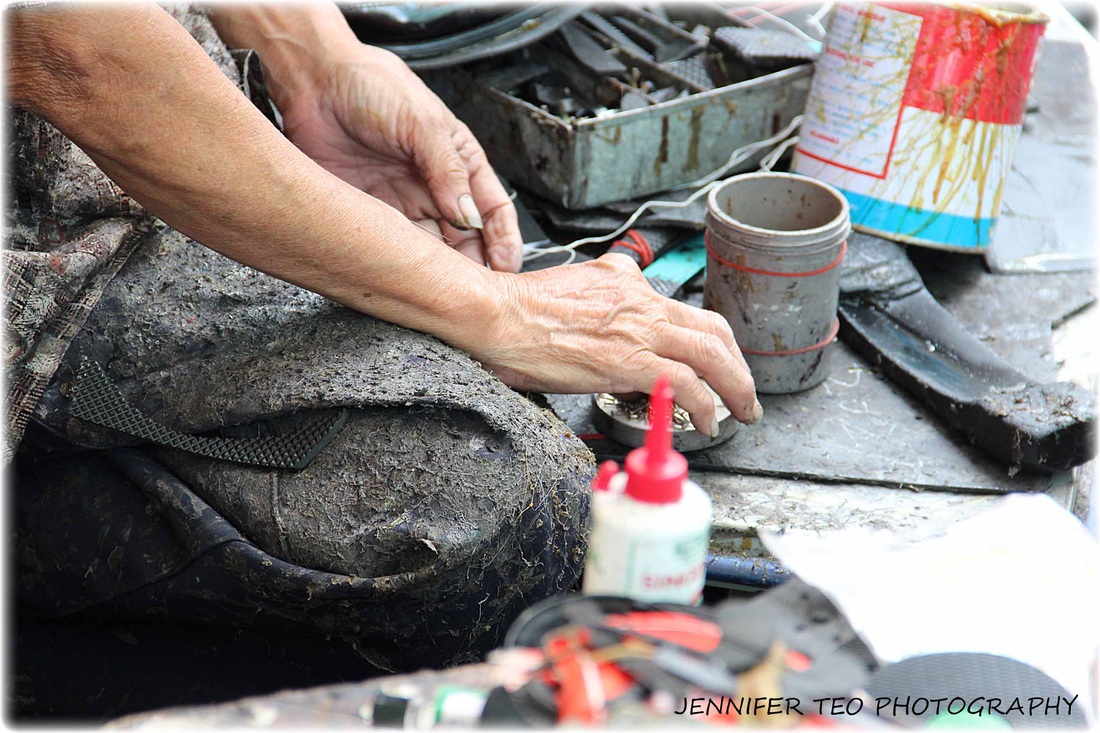
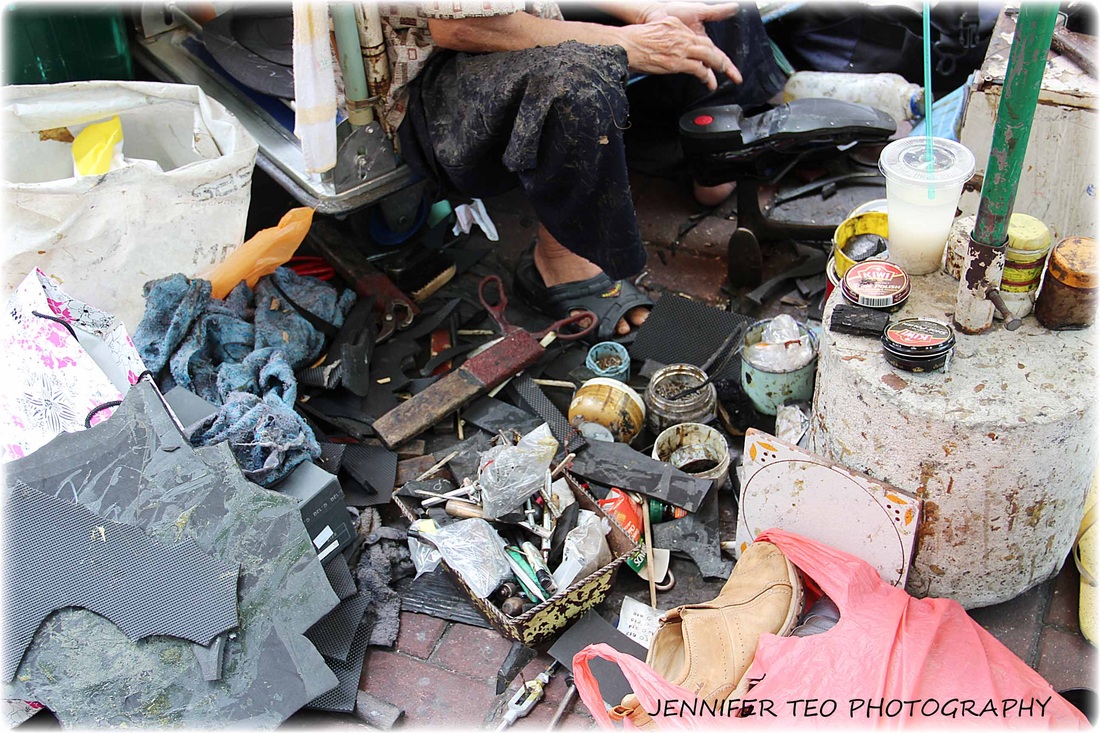
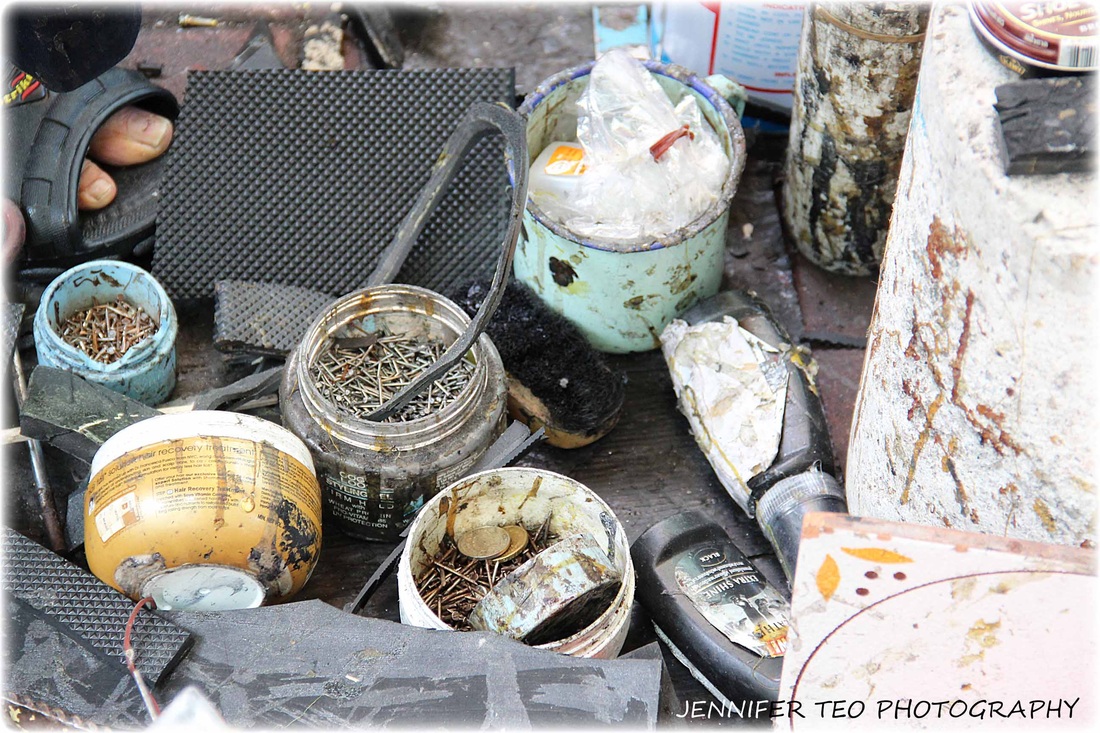
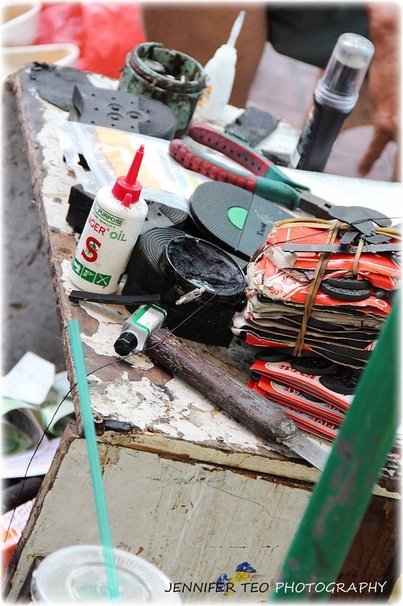
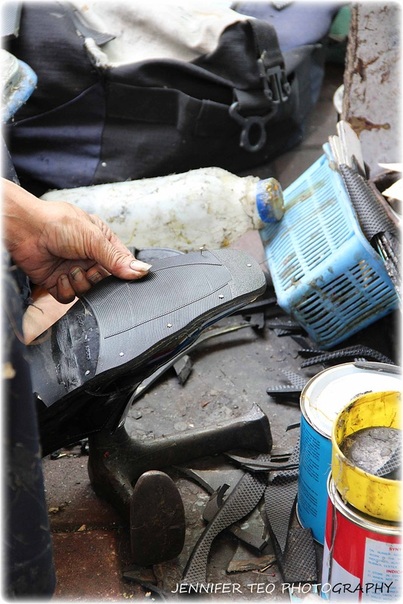
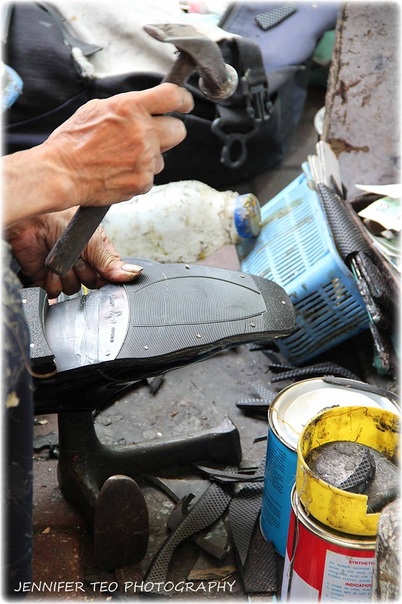
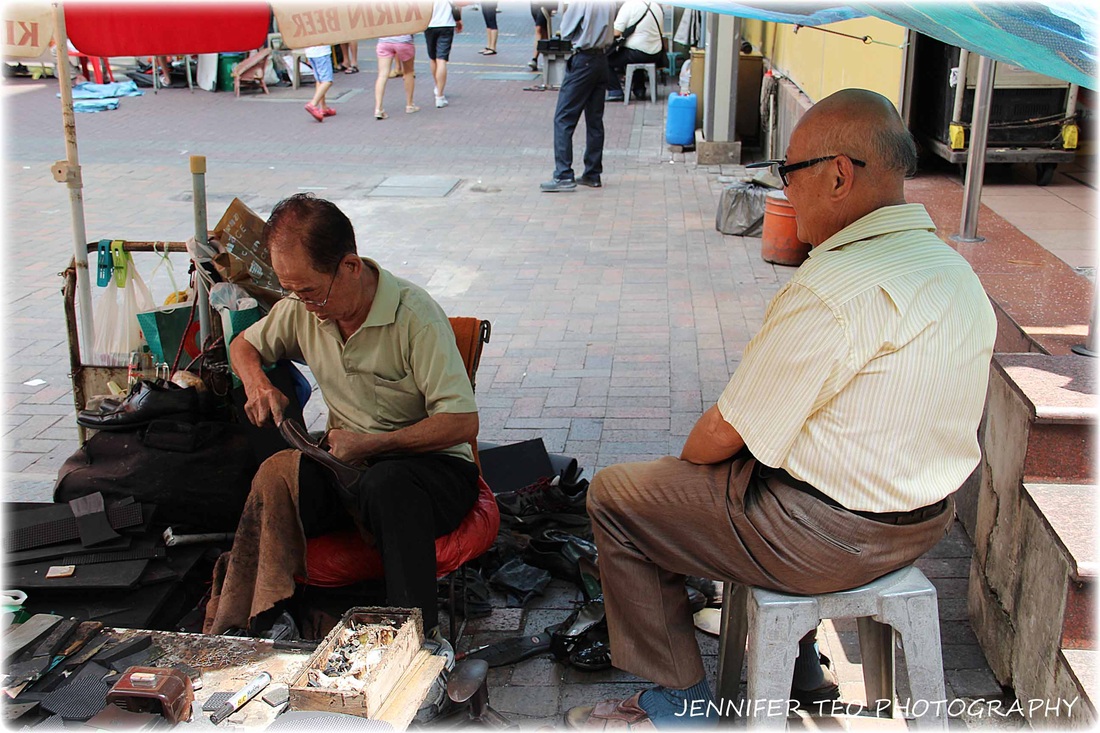
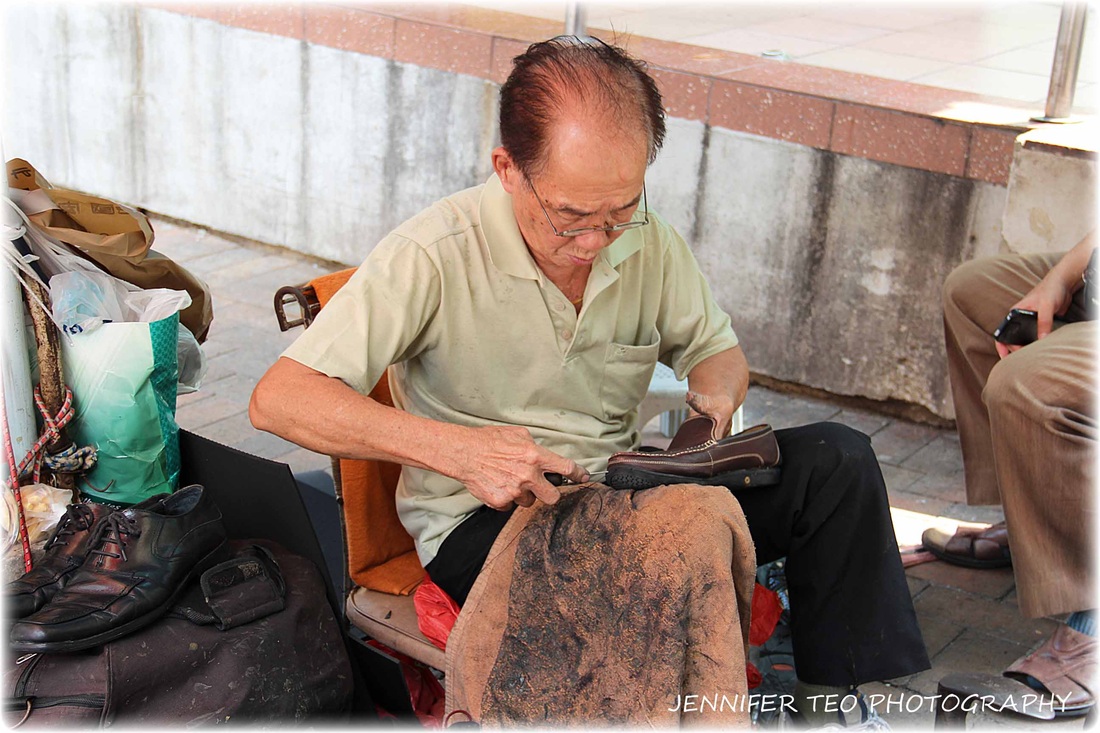
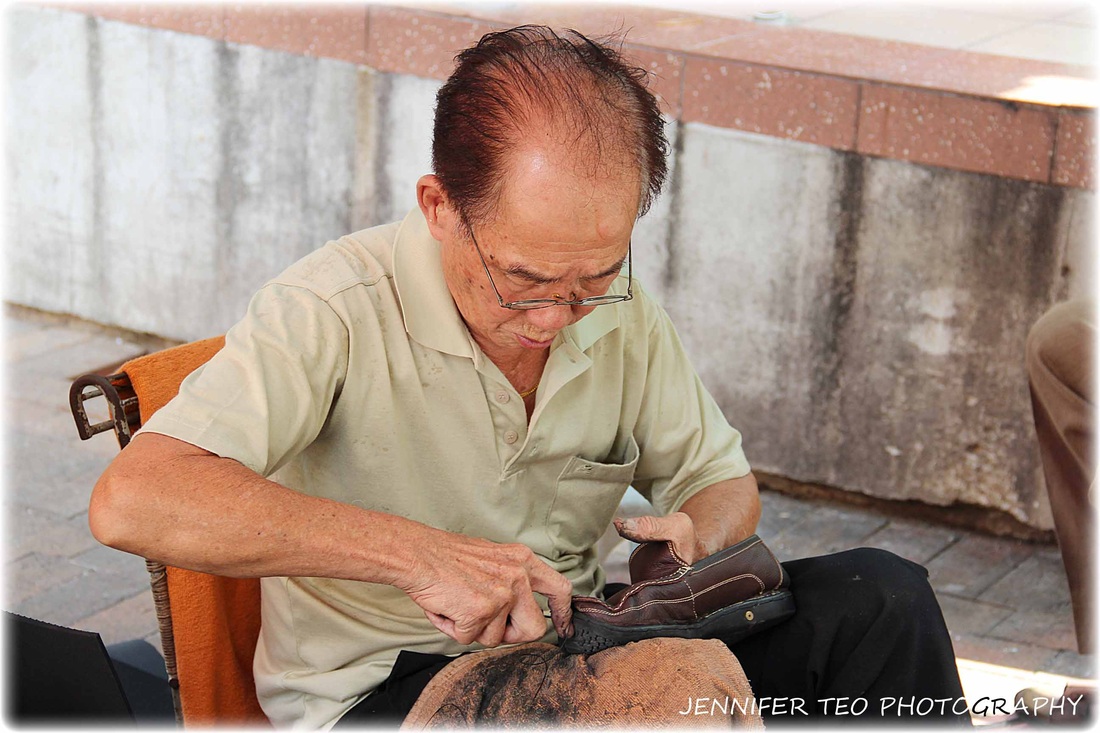
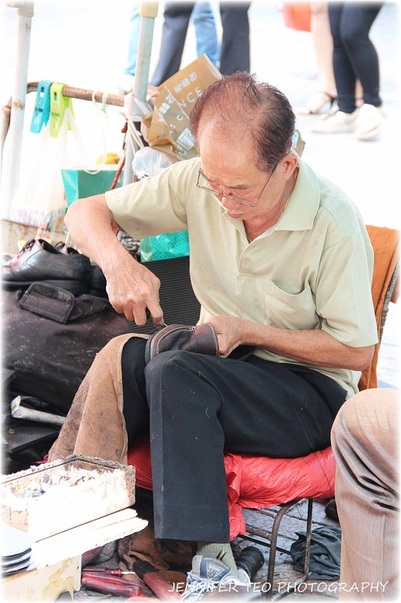

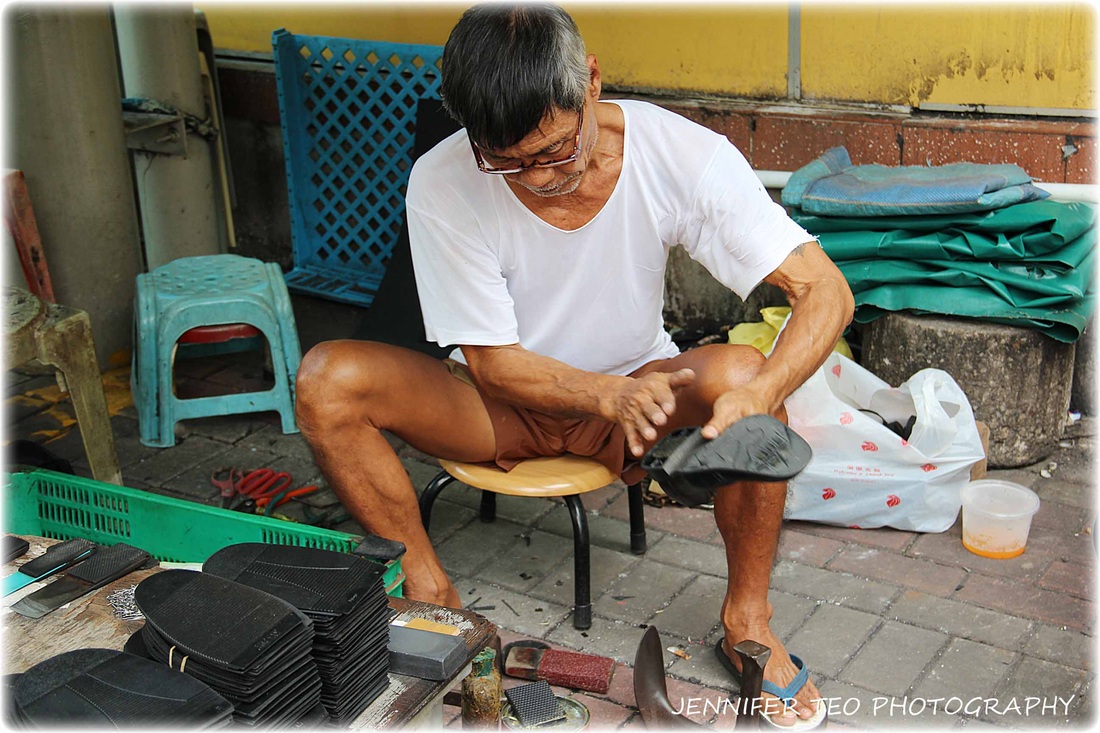
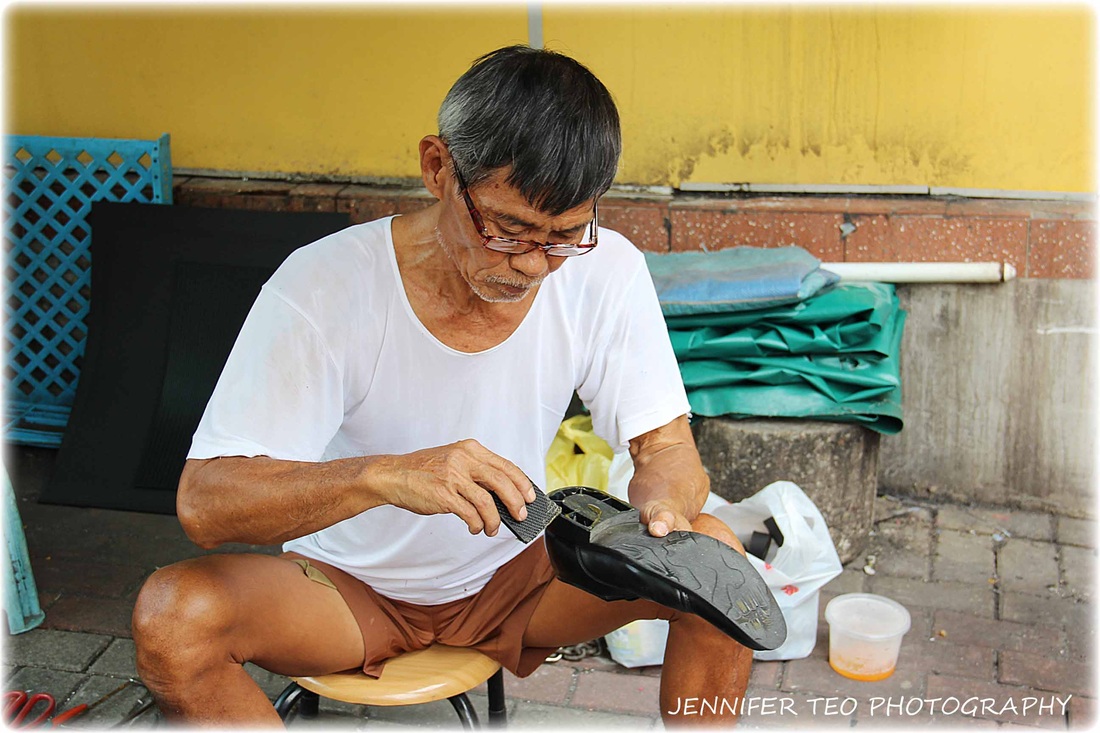
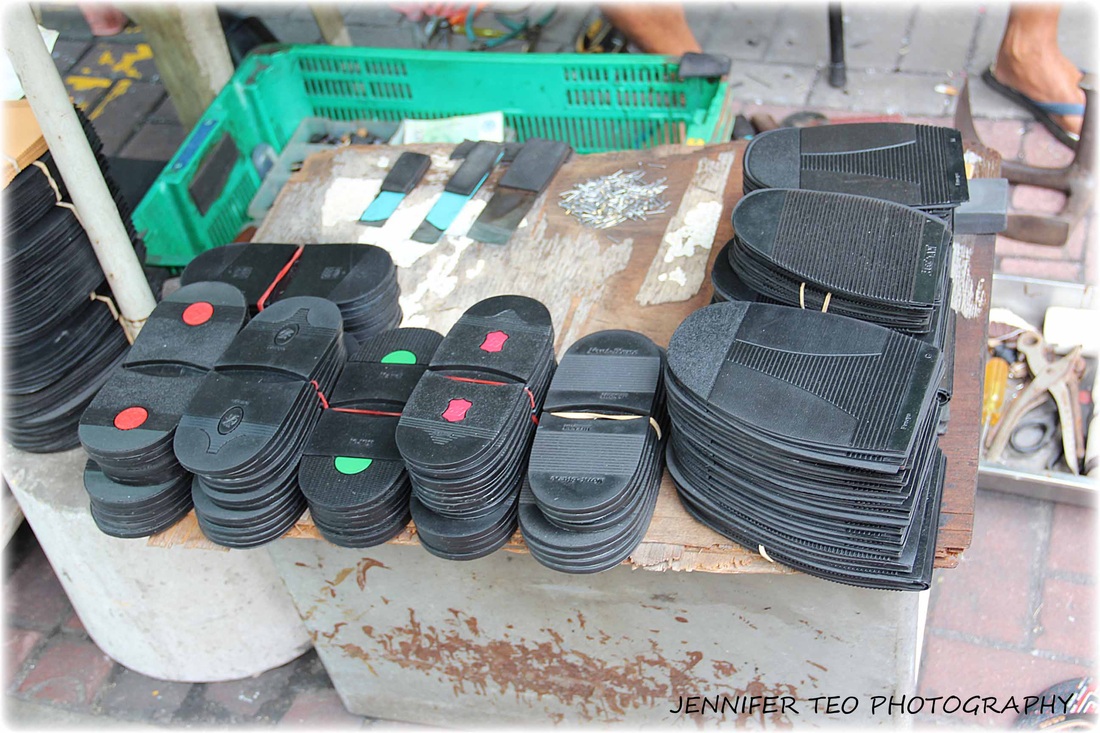
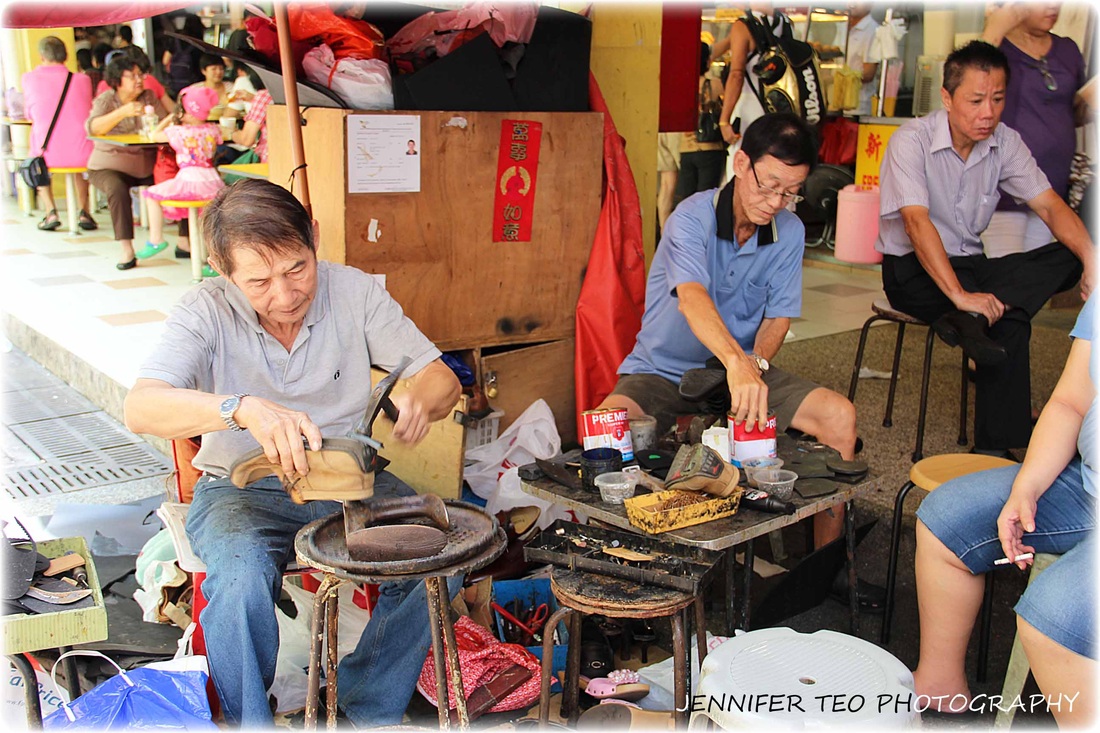
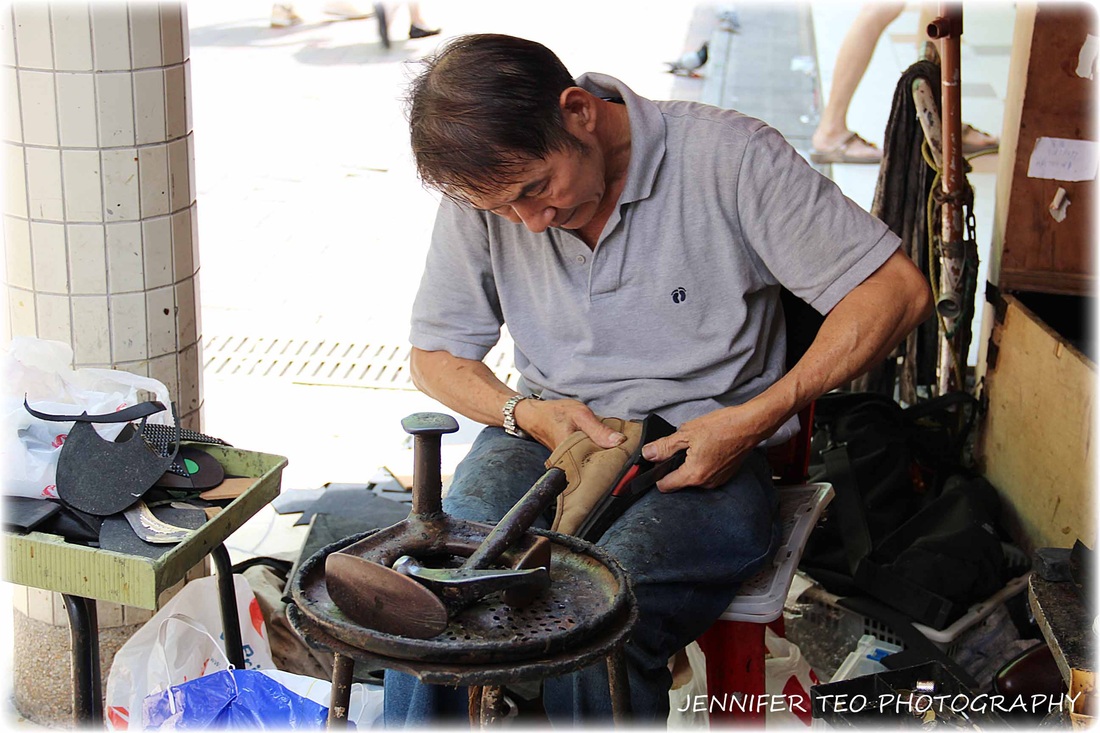
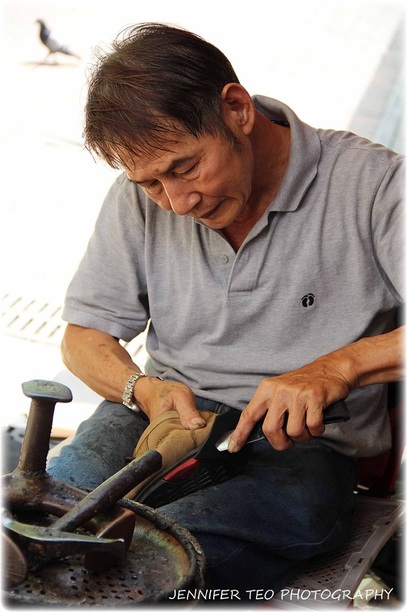
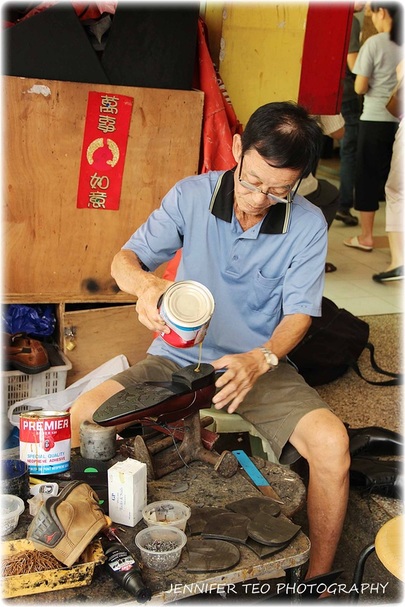
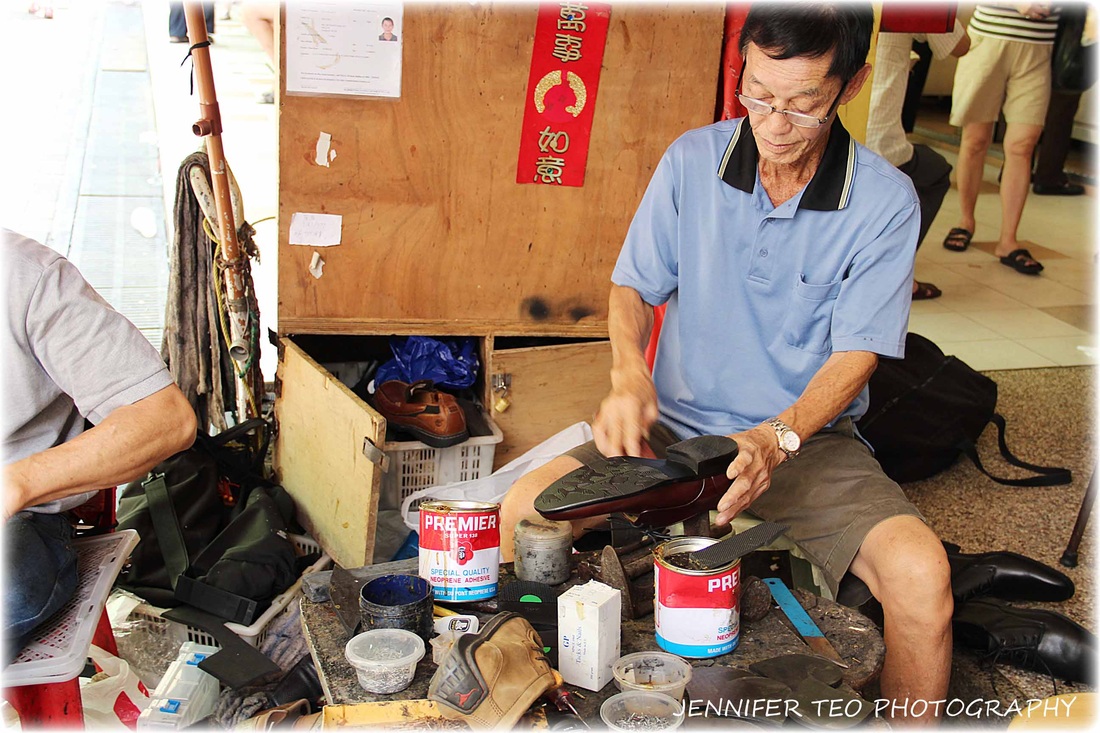
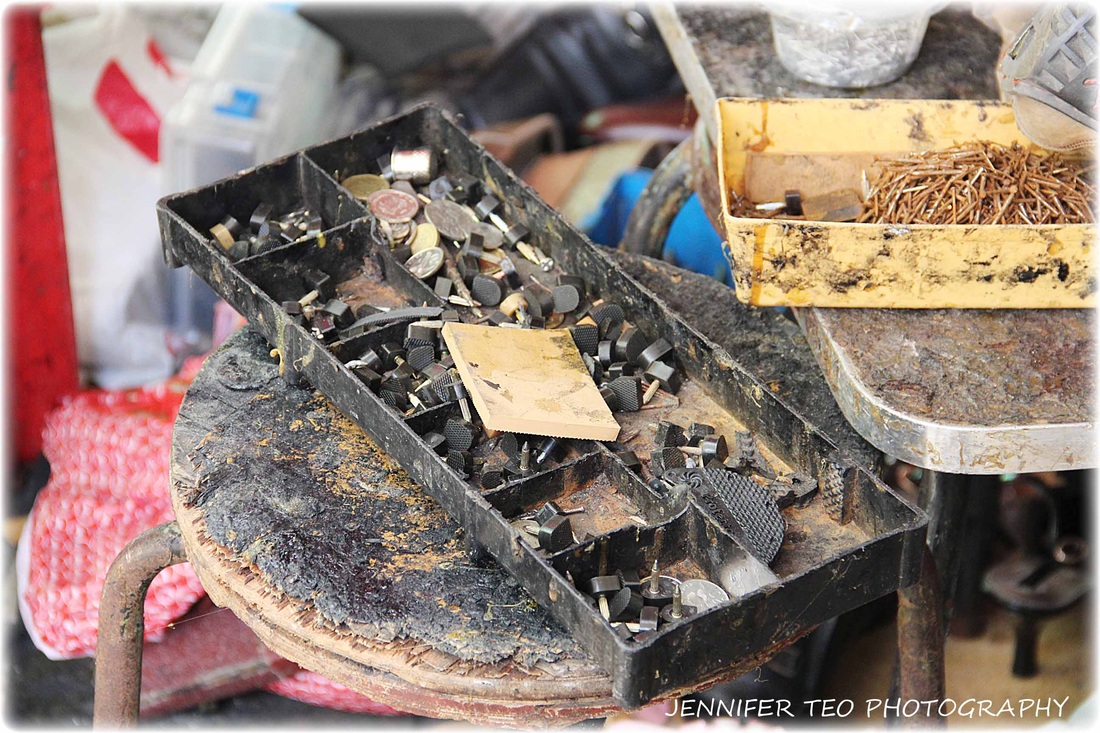
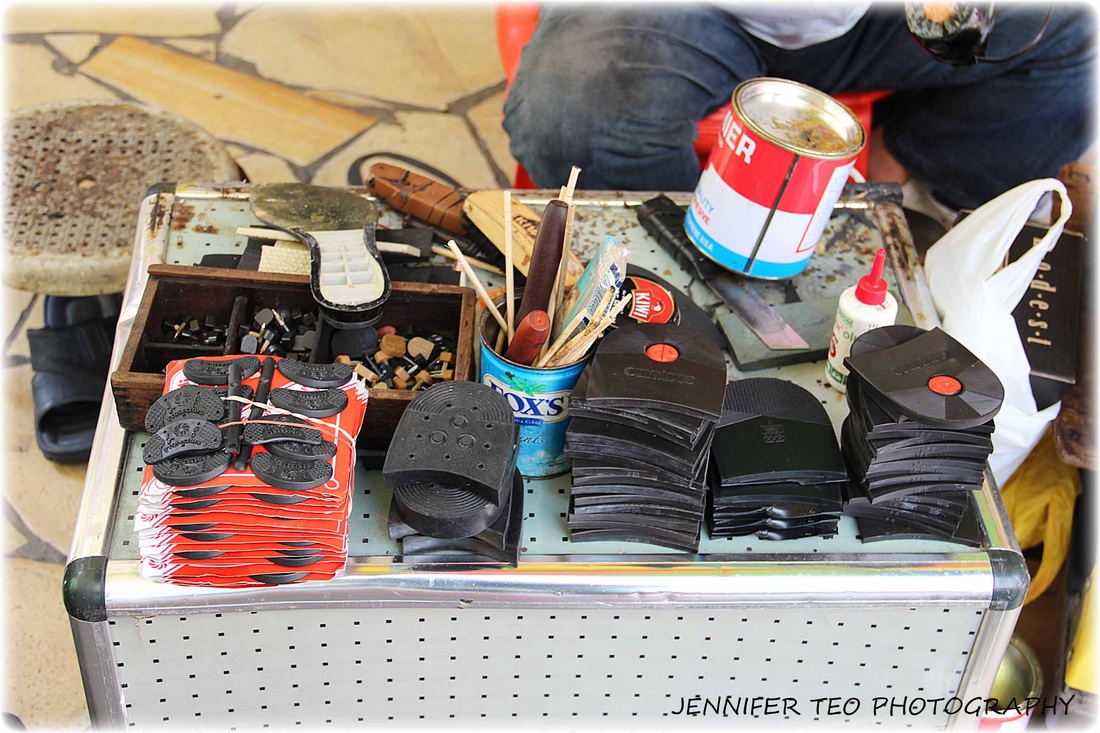

 RSS Feed
RSS Feed






